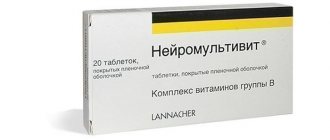Features of the physiological type of stress
The rhythm of life of a modern person accelerates every year. Today, a woman is not only a mother and homemaker, but also a businesswoman, athlete, Komsomol member and simply a beauty.
Men are also not limited to mammoth prey - they are obliged to help around the house, raise children, engage in sports, their development, business, and so on. With increasing responsibilities, many began to experience obsessive stress.
And therefore, today stress is not the privilege of suspicious young ladies, but a serious psychological and physiological diagnosis.
Stress haunts almost every modern person
Causes of stress
The cause of stress (stressor) can be anything, any psychological or other changes. They are based on completely different features, components and reactions. Some people have difficulty going through problems in their personal lives, while others are killed by the loss of something they need.
Stressors are divided into external and internal. External ones include the death of a loved one, loss of a job, etc. Internal ones include low self-esteem, deep and constant soul-searching, and the discrepancy between ideals and reality.
If these reasons occur relatively rarely, then most people experience them easily. Stress activates hidden forces, so a person is able to cope even with very serious difficulties. The main and common cause of the negative consequences of stress is the constant occurrence of irritants.
Types of stress
Thanks to numerous research in the field of psychophysiology, two types of stressful conditions are distinguished - eustress and distress.
Eustress is positive. It triggers the changes in the body necessary to eliminate the stimulus, increases mental and physical activity, and speeds up the reaction. When you need to run a marathon, you get a “second wind”.
Or when preparing a report, an employee is able to work longer hours and much more efficiently.
It should be remembered that the resources spent on such a “marathon” must be restored, otherwise there is a high risk of the second type of stress.
Distress is negative. It appears when the body is no longer able to fight external stimuli (chronic lack of sleep or endless problems in the family, as if rotating on its own axis, conflicts at work).
This is exactly the state we mean when we say we are “under stress.” It is because of this that many people take antidepressants, alcohol, or seek help from specialists. Usually, when talking about the occurrence of stress or depression, this is what they mean.
Symptoms
To avoid the negative effects of stress on your body, both psychologically and physically, you should be attentive to yourself and your loved ones. The first symptoms of an inability to cope with difficulties on your own include:
- constant fatigue, irritability even for minor reasons;
- inability to respond adequately to people and events;
- poor sleep;
- insensitivity to positive events in life, lack of keen interest in what is happening;
- the inability to “forget” about your problems for a while and relax;
- low activity.
If someone begins to notice similar manifestations of stress in themselves or their loved ones, they should be wary and be sure to understand the reasons, and then eliminate them as much as possible and restore strength. The consequences of undetected signs of stress in time can be serious, because irreversible processes occur in the body.
If a sharply negative attitude arises towards one’s own work or boss, many take it for granted; there is no escape from it, because having an income is vital. Irritation and fatigue gradually accumulate. As a result, health may deteriorate, family relationships may deteriorate or even collapse. But all you had to do was look for a new field of activity.
Poor sleep is a symptom of stress
Methods for dealing with stress
The most effective method for dealing with stress is sound, healthy sleep, so you need to carefully prepare for this process. There are a lot of methods, techniques and recommendations for improving the quality of sleep: from ventilating the room to falling asleep in one position. Of course, this is the first and simplest thing you can do.
Some people resort to alcohol, drugs, gambling and much more to cope with stress.
At the initial stage, such “antidepressants” can indeed alleviate the condition a little, but their effect is very short-lived.
However, they are the ones who are able to turn a person around his own axis 180 degrees and from a stressful state lead to a state of painful dependence, which is also incredibly difficult to get rid of.
The main thing is balance and the obligatory desire to soberly assess your life and your capabilities.
Most problems can be solved fairly quickly with just a little patience. This will stop the development of stress, and life will return to normal.
Source: https://urazuma.ru/stress/fiziologiya.html
Physiological stress: causes, manifestations and meaning
.
The rhythm of life of a modern person accelerates every year. Today, a woman is not only a mother and homemaker, but also a businesswoman, athlete, Komsomol member and simply a beauty.
Men are also not limited to mammoth prey - they are obliged to help around the house, raise children, engage in sports, their development, business, and so on. With increasing responsibilities, many began to experience obsessive stress.
And therefore, today stress is not the privilege of suspicious young ladies, but a serious psychological and physiological diagnosis.
Stress haunts almost every modern person
Mechanism of stress formation
Physiological stressors are divided into 2 groups.
- External – hypothermia, overheating.
- Internal – an excess of emotions, thirst, hunger, pain shock.
Anxiety is the first reaction to a stimulus. The central nervous system sends a signal to the body and puts it on full alert, heightening all senses and providing a powerful release of hormones into the blood.
The sympathetic department of the central nervous system is responsible for this reaction, which a person cannot influence. This department reacts with lightning speed to all changes in the external environment. The larger the change, the stronger the reaction.
Its consequences for the body as a whole are also more severe.
Anxiety
As soon as information about changes of any kind is received, the autonomic system begins to act actively, without yet understanding what exactly happened. To ensure any reaction in the body, energy is needed.
The vegetative system speeds up the metabolism to produce more of it. The supply of oxygen to the blood sharply increases, which ensures accelerated functioning of the brain centers.
The sympathetic department spends a fraction of a second on all these actions, and then its work is completed.
Stages of stress
The following actions are performed by the endocrine system, excited by the central nervous system. It controls all processes in the body through the production of hormones. Supports all changes activated by the nervous system with adrenaline. The adrenal glands produce this hormone. The process can take from a few seconds to 15 minutes.
At this stage the alarm reaction is complete. Next comes a period of adaptation to the current circumstances.
Adaptation
This stage takes the longest period. The process occurs with the active participation of the hypothalamus, it is aimed at adapting the body to the conditions.
To provide the body with energy, plasma glucose levels increase and the number of cells involved in synthesis increases.
The duration of the adaptation period will depend entirely on the psychophysical state of the body, the intensity and duration of the stress.
During the adaptation period, the body works hard, without requiring sleep or food. This type of stress response can have 2 outcomes.
- Complete exhaustion.
- Full adaptation to the current situation.
Exhaustion
During this phase, physiological symptoms of stress can be observed:
- weakening of the body's protective functions;
- disturbances in the functioning of organ systems;
- development of cancer;
- mental disorder.
If the stress factor is not eliminated, the body may die. Long-term minor stress leads to the death of neurons, which, in turn, leads to irreversible changes in brain function: memory impairment, phobic disorders, obsessive thoughts, etc. The psychophysiology of stress is a complex process.
With the constant impact of stressors on the body, a person needs qualified medical care.
Dynamics of stress development
Physiology of stress development
Psychophysiological mechanisms of stress have allowed humans to survive as a species. Physiological responses to stress in humans are similar to those of animals. When environmental conditions change, the body prepares to flee or attack.
However, if in ancient times these features helped to survive and stop exposure to the stimulus, today stress is prolonged, because it is associated with other factors.
Events that make animals nervous are always associated with attempts to survive and adapt to a different climate; In humans, stress is very rarely a consequence of the desire to survive.
Thus, it turns out that the central nervous system repeatedly activates defense mechanisms in vain. Frequent activation of the body causes disordered reactions. And stressors are less evil for the body than the reaction itself.
Physical stress is the work of 2 basic stressor response systems. They may be activated or not included in the control depending on the intensity and duration of the influence of the stress factor. First, the body must identify the type of stressor.
To do this, the brain needs to use the functions of perception and memory. When a threat is identified, the central nervous system integrates information about it, causing the limbic system (hippocampus and cerebellum) to stimulate an emotional response.
It forms the behavioral line necessary for survival.
Reaction to stress
The limbic system activates the hypothalamus, which controls the harmony of physical reactions with the emotional state. It also controls the production of stress reactions by the sympathoadrenal system and the pituitary-adrenal stress axis. Both of them regulate the functioning of the cardiac system.
Physical stress
Physical stress is a reaction to pain, hunger, heat, cold, thirst; these are vital reactions to physical factors. Bodily stress or physical stress is caused by physical material factors such as injury, infection, radiation, severe cold or high fever. All highly developed organisms can initiate a specific stress response without suffering actual physical impact. The body constantly analyzes the situation through the central nervous system. When a perceived need for emergency measures arises, the central nervous system stimulates the stress response in advance. For example, when you suddenly notice a predatory animal hiding in a nearby tree, the ability to “turn on” the stress response occurs before the dangerous predator attacks you, this is a sure salvation.
In modern society, the relative impact of different types of stress has shifted toward the predominance of psychological stress. A person is constantly in an excess of new information; work, family, relationships are often the cause of psychological stress.
Post-traumatic stress is a type of stress. It affects people who have been subjected to violence, suffered in a car accident, accident, fire or other natural disaster. This stress also occurs in people who witnessed the tragedy. Psychologists believe that post-traumatic stress in physically healthy people is a physiological and emotional reaction of the body, which is aimed at protecting against future injuries.
Symptoms of post-traumatic stress:
- Intrusive memories, repeated “replaying” of events, nightmares with unpleasant memories;
- A kind of brain protection in the form of an emotional barrier, which is characterized by the victim’s reluctance to discuss the tragedy;
- A gray and faded world around us, a hopeless future, a state of constant depression in the victim;
- Constant irritability, a state of excitability due to increased production of adrenaline by the body.
Post-traumatic stress is different from shock after trauma. The state of shock quickly passes by itself, but the symptoms of such stress persist for at least several months.
Physiological stress: causes, manifestations and meaning – Negative
Physiological stress is internal changes that occur as a result of a reaction to changing circumstances in order to adapt. Stressors can be very different. Physiological stress is formed along the chain: anxiety-adaptation-exhaustion.
Stress has dangerous consequences
Signs of stress
Physiological signs of stress are not the first to appear. Most often, the following changes in the patient’s behavior are observed, which are noticeable to others:
- aggressiveness, inability to adequately assess the situation: a person cannot stay in one place for a long time (behavior is caused by the body’s defensive reaction to what is happening);
- passivity, reluctance to see people, communicate with them: gradually these signs become more obvious and bring the person closer to persistent clinical depression;
- a person exhibits both the first and second symptoms at the same time: his brain is at the limit, it seems that he is about to break down, but the patient sharply rejects all attempts to help, tries to avoid communication, because obsessive thoughts and images do not allow the brain to relax even a little give me a sec.
The effect of stress on the body
Types of stress symptoms
The physiological manifestations of stress include several types of signs:
- cognitive;
- emotional;
- behavioral;
- physical.
The first group of symptoms is the least noticeable. They manifest themselves in the inability to concentrate attention on one subject, constant obsessive thoughts, and anxiety that does not manifest itself outwardly. First of all, it reduces brain performance.
Psychological stress has quite clear symptoms. A person cannot relax; his body is constantly in tension, which is clearly visible to others. It manifests itself externally in capriciousness, nervousness, constant irritability, and excessive temper. In some cases, there are frequent mood swings or passivity.
Behavioral symptoms of stress include eating disorders, i.e. undereating or overeating. Sleep disturbances and alcohol abuse are observed. Symptoms appear that clearly indicate a nervous disorder: twitching a leg, tapping a beat with a pen, snapping fingers, etc.
Changes in physiology during stress are a natural consequence of exhaustion.
Physical symptoms may appear in the form of diarrhea, constipation, vomiting, dizziness, loss of consciousness, headaches, tachycardia, increased or decreased blood pressure, and decreased libido. The general state of health deteriorates significantly, chronic diseases worsen or new ones appear.
Physiological signs of stress
Methods for increasing stress resistance
Low physiological resistance to stress can be corrected. It is very important to teach people how to deal with nerves correctly. We cannot completely protect ourselves from stressors, but we can adjust our behavior and our attitude towards them.
Low physiological resistance to stress is increased through social adaptation. This process represents the active adaptation of the individual to the society around him. Training is provided in proper communication and self-presentation.
The process involves working on understanding oneself as a full-fledged member of society, one’s status, and behavior.
It provides for the organization of joint activities, the adoption of the norms and values of the society in which the person is located, without infringing on one’s interests.
Neutralization methods
The next stage is the identification of adaptive potential and the ability to apply it. Adaptation potential is completely related to the previous stage. External stressors significantly reduce it.
When encountering a potentially dangerous stressor in such a state, maladjustment may occur, which will lead to disastrous consequences.
Therefore, it is very important to improve your health and provide your body with quality rest and nutrition.
Conclusion
The physiological manifestations of stress can be briefly described as follows: a set of changes in the body that manifest themselves in the form of various symptoms, both physical and emotional-cognitive. The characteristics of stress resistance will be different for each individual.
More vulnerable people should definitely increase their resistance to stress by following the above recommendations. A good prevention of the appearance of neuroses is physical and emotional unloading. This can be achieved through sports.
A twenty-minute run after or before work perfectly clears the brain, and a contrast shower afterwards gives you a boost of energy for the whole day.
The physiology of stress suggests not refusing to communicate with people, even if you really don’t want to see them, but looking for alternative methods and approaches in conversation.
Source:
Causes and consequences of physiological stress
Every day on television it is said that people are constantly exposed to stress attacks. Does a person understand what physiological stress is, and is he aware of what happens to the body during this process? After all, every person is sure that they have experienced such a problem.
Body reaction
The human body responds to the influence of environmental factors with a standard nonspecific reaction of neurohumoral systems. There is damage and a change in balance in the body, which is otherwise called “hemostasis,” caused by the impact of a negative factor on the body.
Indeed, most of the irritants, as they are also called, stressors or stress factors, affect the body every day. For example, such as cold, heat, loud alarm sound in the morning.
The alarm clock is heard - the eyes are opened, that is, exposure to a stressor triggers a chain of stress reactions, namely, it begins the process.
Causes
Perhaps you are a hermit and will not experience the negative causes of psychological stress. However, no one can avoid physiological reasons. Physiological stress is everywhere.
Nature itself is the reason for them: noise, vibration, temperature fluctuations, hunger due to eternal diets, or perhaps torment that you do not adhere to these diets, but by the way, this is a psychological reason.
But, as you know, everything in nature is interconnected.
Conventionally, physiological stress for reasons of impact can be divided into 4 main groups:
- Chemical stress. Occurs under the influence of chemicals, caused by an increase in the level of carbon monoxide in the inhaled air, etc.
- Stress is biological. Occurs due to diseases.
- Physical stress. This is hard training at the limit of the body, sometimes exhausting, often excessive.
- Mechanical stress. Occurs when the integrity of the body is damaged (surgery, trauma).
Stress affects the human body in different ways, and according to this principle they are divided into:
- Distress. Conventionally described as unfavorable stress, which is not a completely fair definition, since, in turn, distress is divided into:
- harmful (exhaustive training, hypothermia, overheating);
- mobilizing (competitions, competitions, dousing with cold water).
- Eustress. This is positive stress caused by experiencing pleasant events.
Development process
Let's look at the physiological basis of stress and what underlies it. The pattern of development of physiological stress is quite simple:
- anxiety;
- adaptation
- exhaustion.
What is the scenario for the development of physiological manifestations of a situation that the human brain recognizes as dangerous? In other words, the first domino fell, the cerebral cortex perceived a signal from the environment about a dangerous situation, and this is what happens next:
- From the cerebral cortex, signals about a dangerous situation rush to the hypothalamus. This is a small but extremely important area of the brain, or more precisely, the medulla oblongata, which contains a large number of clusters of cells, being the highest control center of the endocrine and autonomic nervous system.
- Then some changes occur in the functioning of the autonomic nervous system. First, the activity of the sympathetic division of the autonomic nervous system increases, which manifests itself as physiological symptoms of stress:
- tachycardia, or increased heart rate;
release of the hormone adrenaline into the bloodstream if a person experiences fear, or norepinephrine if he experiences anger;
- muscle contraction becomes more intense and muscle tension occurs;
- Due to spasm of peripheral vessels, the skin becomes pale in color, and cold sweat may appear.
- Activation of hormonal mechanisms, for the discovery of which Hans Selye was awarded the Nobel Prize. So-called anti-stress hormones are produced by activating the adrenal cortex. This reaction, like the previous one, is triggered by the hypothalamus, but is significantly different. Glucocorticoids enhance all metabolic processes of the body, the following physiological symptoms appear: under stress, the level of glucose in the blood increases, inflammatory processes are suppressed, the body's sensitivity to pain decreases - in general, the body adapts faster and better to the demands of the environment.
If physiological stress continues to influence, then with a decrease in the limit of adaptive energy, with a “weak” type of higher nervous activity, the parasympathetic parts of the autonomic nervous system are activated, which can manifest as the following physiological symptoms: general weakness, fatigue, decreased blood pressure, decreased muscle tone, gastrointestinal disorder.
Source: https://trepuzec.ru/stress/fiziologicheskij-stress-prichiny-proyavleniya-i-znachenie.html
VI. Stress
Stress is a state of mental tension that occurs in a person during activities in the most complex, difficult conditions, both in everyday life and under special circumstances (exams, competitions, etc.).
I. G. Selye. Stress, distress, general adaptation syndrome (GAS)
In 1926, G. Selye noticed that all patients, regardless of their own diagnosis, exhibit similar symptoms: paleness, emaciation, lack of appetite, etc. He called it the " sickness syndrome"
"
After 10 years, he conducted an experiment on animals: he injected toxic substances into their blood. Results (analysis of the state of internal organs): “triad of stress (anxiety)” :
1) The adrenal glands have increased in size and darkened;
2) Atrophy of the thymus gland (thymus);
3) Ulceration of the inner surface of the stomach.
Such symptoms can be traced under a number of influences
: mental (immobilization), exposure to cold, heat, infections, injuries, bleeding, etc. These reactions are called
general adaptation syndrome . It consists of three stages :
1) Anxiety reaction. The body changes its characteristics when subjected to stress, as shown in the figure, i.e. general resistance to stress is below normal. The work of the pituitary gland, thymus gland, and adrenal cortex is activated. Hormonal changes occur.
2)Phase of resistance (resistance). If the action is combined with the possibilities of adaptation, then the resistance phase in the body stabilizes; in this case, signs of anxiety practically disappear, and the level of resistance rises significantly higher. It consists of restoring the reserves of those hormones that were used up in a state of anxiety. Adaptation (the body has found the opportunity to function normally under the influence of a stressor);
3)Exhaustion phase. As a result of prolonged exposure to a stress stimulus, despite increased resistance to stress, reserves of adaptive energy are depleted. Then the signs of an anxiety reaction reappear, but now they are not reversible and the individual dies.
That. Stress is a nonspecific response of the body to any demand placed on it. Described as a set of physiological and biochemical changes in the body in a dangerous situation. Generalized reaction of the whole organism. This formulation provides a roughly “neutral” characterization of stress; From this Selye deduces two types of stress:
Distress ( d-stress
) – this is stress that is unpleasant and harms the body, negative stress.
Eustress ( f-stress
) is a positive stress that helps mobilize the body.
The biological function of stress is adaptation.
It is designed to protect the body from threatening, destructive influences of various kinds: physical, mental. It promotes the mobilization of individual resources to overcome the difficulties encountered.
Selye initially studied the stress response in response to physical stimuli, and then it turned out that mental factors also cause stress. Since any agent that requires adaptation causes stress, any disease is associated with some manifestation of stress (the disease entails some adaptive reactions). For diseases that arise mainly as a result of adaptation defects (improper course of stress syndrome), Selye proposed the name “adaptation diseases”, because they depend less on the nature of the pathogenic factor than on the adaptation of the body's reactions to nonspecific stress effects. On the one hand, one cause (stress), a pathogenic factor, can cause many different diseases (selection of an organ based on the principle of the weak link), on the other hand, a certain strictly defined lesion can be caused by different agents, since they all have a stressor effect.
The relationship between emotions and stress.
It is believed that the main component of psychological stress is emotional arousal. A characteristic tendency is to view stress as a special state, juxtaposed with other emotional states. Some authors propose to consider the problem of stress in a functional aspect, as a problem of the influence of emotion on the productive activity of the subject. A state of mental tension (stress) occurs when a person performs productive activities in difficult conditions and has a strong impact on its effectiveness.
Specificity of response to stress:
1) high resistance to stress; 2) low, while for some the activity improves, for others it worsens to the point of failure. It depends both on the situation and on the subject himself. Therefore, when assessing tension, performance indicators are used: the nature of shifts in activity (deterioration or improvement).
Tension is characterized by two characteristics:
1. The nature of disturbances in activity ( inhibitory form
– slow performance of intellectual operations,
impulsive
– an increase in the number of erroneous actions,
generalized
– strong excitement, a sharp deterioration in performance, motor incoordination, etc., complete disruption of activity).
2. Strength, persistence of these disturbances (insignificant, tension disappears quickly; long-term and noticeably affecting the process of activity; long-term, pronounced and practically does not disappear, despite preventive measures). Physiological changes and performance indicators are important indicators of psychological tension.
II. Lazarus. Physiological and psychological stress.
Stressors are unfavorable external and internal influences of significant strength and duration, leading to the occurrence of stressful conditions.
The harmfulness or unfavorability of a stimulus depends on the nature of psychological structures. The meaning of the stimulus and the attitude towards it are determined by past experience. The nature and structure of the stress response depends on the psychological defense mechanism acting as a mediator.
Types of stress:
1)Physiological stress. This is stress caused by physiological stressors (have a direct effect on body tissue; these include pain, cold, high temperature, excessive physical activity, etc.).
2) Psychological stress is stress caused by psychological stressors: stimuli that signal the biological or social significance of events. These are signals of threat, danger, anxiety, resentment, and the need to solve a difficult problem. A) Information stress (occurs in a situation of information overload: a complex task, a quick solution, etc.).
B) Emotional stress (occurs when an individual cannot satisfy his needs, biological and social: grievances, threats, conflicts, etc.).
Petukhov.
Psychological stress: emotional stress (that limit of tension beyond which emotions interfere with normal activities) and operational stress (the level of tension that is optimal and even necessary to perform the activity). If stress was an adaptation mechanism from the very beginning, then it is necessary to some extent.
VII. Clinical reactions to stress. Post-traumatic stress disorder (PTSD)
Clinical reactions to stress:
1) Acute stress reactions, the duration of which can range from several hours to several days.
2) Adaptation reactions, reactions to life changes.
3) Reactions of a neurotic type.
4)PTSD.








